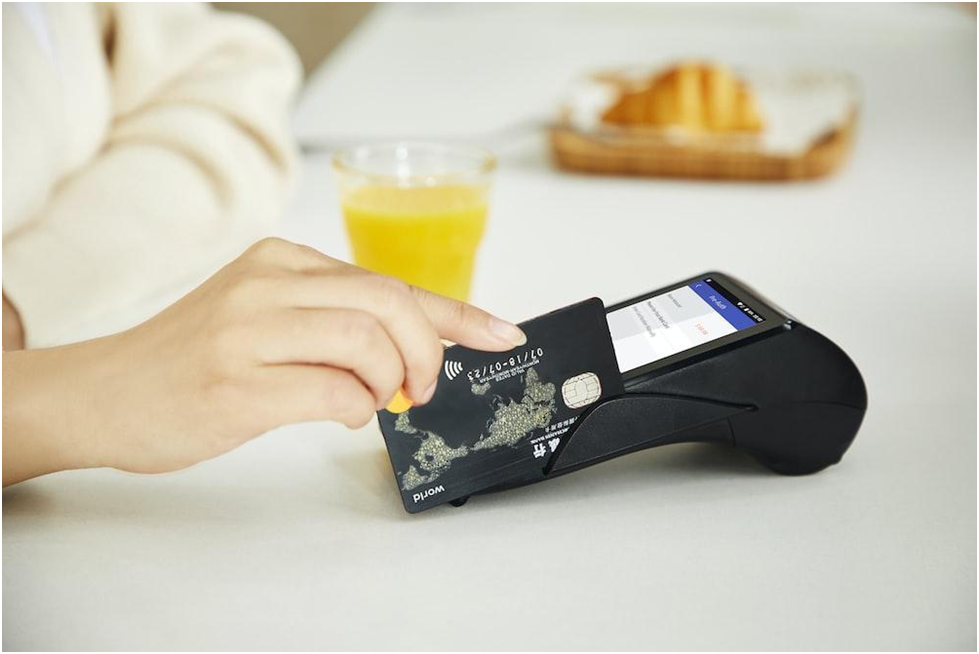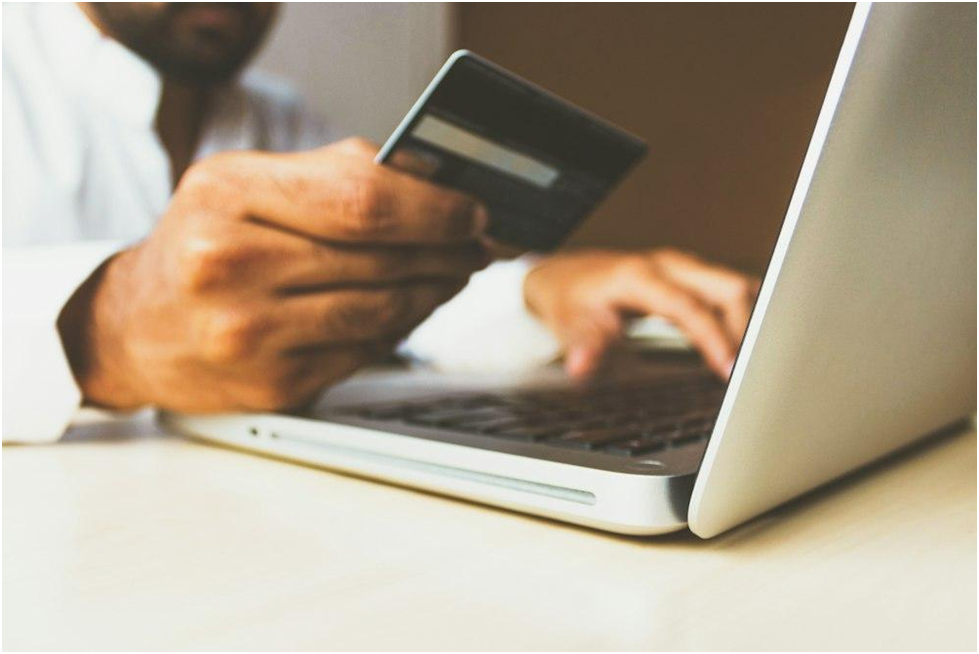Are you planning to start your business soon? Not sure which credit card terminal you should choose for optimal business growth? We can relate to your thoughts. We’re rapidly transitioning to a digital-first economy where cashless payments are the new normal. Any business that lacks in this domain suffers in terms of profitability and growth. […]
Are you tired of dealing with ancient, clunky point-of-sale (POS) hardware that seems to have been transported straight from the Stone Age? Well, fret no more! We are here to introduce you to a fantastic array of POS hardware suppliers who will revolutionize the way you conduct business.
Gone are the days of fumbling around with temperamental cash registers or relying on outdated credit card swipers. With the latest POS hardware, you can ensure a seamless and efficient checkout experience that will have both you and your customers smiling from ear to ear.
Imagine a sleek, futuristic touchscreen monitor that effortlessly registers each transaction with lightning-fast precision. No more blurry receipts or manual calculations; these cutting-edge devices do all the work for you. And if you’re worried about installation headaches, fear not! Our trusty POS hardware suppliers provide comprehensive support and will guide you through the process step by step.
But wait, there’s more! These suppliers don’t just offer beautiful devices; they also provide a whole world of additional features. Need to manage inventory? Not a problem! The POS systems seamlessly integrate with intuitive software that keeps track of every single item in your store. Say goodbye to misplaced products and hello to streamlined stock management.
And let’s not forget about the convenience factor. The days of being tied to a clunky cash register are long gone. These modern wonders allow you to take your business anywhere and everywhere. Whether you’re at a bustling trade fair or running a pop-up shop, you can effortlessly process transactions with the same efficiency and professionalism as in your brick-and-mortar store.
Oh, and did we mention the incredible array of payment options? From NFC-enabled contactless payments to online wallets, our POS hardware suppliers have got you covered. You and your customers will enjoy the ultimate flexibility when it comes to settling the bill. No more fumbling for exact change or nervously checking your watch while someone fumbles with card processing!
So, what are you waiting for? Say goodbye to outdated technology and embrace the future with open arms. Contact one of our top-notch POS hardware suppliers today, and get ready to revolutionize your business. With their sleek, state-of-the-art devices, extensive support, and a plethora of features, you’ll wonder how you ever managed without them. Don’t let your competitors steal the show; it’s time to make your mark in style!
Subscription Billing: Innovations in Recurring Payment Models
Picture this: It’s a lazy summer afternoon, and you’re sitting on your couch, binge-watching your favorite TV show. You’re immersed in the thrilling plotline, the characters starting to feel like old friends, when suddenly, the screen turns black. No, it’s not a cliffhanger; it’s your subscription for the streaming service that expired. As frustration takes over, you ponder the mysteries of subscription billing and the innovative models that are reshaping the way we pay for our recurring services.
Subscription billing is no longer limited to magazines and cable television. Today, it encompasses everything from music streaming platforms to meal kit delivery services. These recurring payment models have revolutionized the way we consume products and services, offering convenience, personalization, and a dose of surprise in our daily lives.
One exciting innovation in subscription billing is the rise of tiered pricing models. Gone are the days of one-size-fits-all subscriptions. Now, companies are offering different tiers with varying features and benefits to cater to the unique needs and preferences of their customers. Want to listen to your favorite tunes ad-free? Upgrade to the premium tier. Craving that extra-special ingredient for your culinary experiments? The top-tier subscription box has got you covered. These tiered pricing models not only enhance the customer experience but also provide businesses with a scalable revenue stream.
But what about those who are still on the fence about subscribing? Enter the world of free trial subscriptions, a genius marketing strategy that has lured many hesitant potential customers. Offering a taste of what’s to come, businesses provide a limited period of free access to their services. This allows customers to explore, experience, and fall in love with the product before committing to a paid subscription. It’s like trying a bite-sized sample of your favorite ice cream flavor before deciding to indulge in a whole cone. By leveraging the psychology of craving and anticipation, free trial subscriptions have become irresistible temptations, converting countless skeptics into enthusiastic subscribers.
Personalization is the key to our hearts, and it turns out, also the key to successful subscription billing. In today’s hyperconnected world, companies are collecting vast amounts of data about our preferences, habits, and lifestyles. By harnessing the power of this data, businesses can curate tailor-made, personalized experiences for their subscribers. From personalized product recommendations to curated playlists based on our music tastes, these subscriptions make us feel seen, understood, and valued. We are no longer a faceless mass of subscribers; we are unique individuals with unique needs, and subscription billing has embraced that notion wholeheartedly.
Finally, let’s talk about the sheer variety offered by subscription billing. It’s like entering a virtual candy store, with countless flavors and combinations to choose from. Whether you’re a bookworm, a fitness enthusiast, a pet lover, or a succulent enthusiast, there’s a subscription service out there just for you. It’s no longer limited to the traditional old-school subscriptions; now, the possibilities are endless. Want monthly deliveries of freshly roasted coffee beans from around the world? Done. Dream of a monthly box filled with artisanal chocolates? Just a few clicks away. Subscription billing has transformed our shopping experience, turning it into an exciting treasure hunt for the perfect subscription service.
Innovation in subscription billing has given us a whole new way to satisfy our cravings and indulge our passions. With tiered pricing models, free trial subscriptions, personalization, and a wide array of choices, subscription billing has truly become a delightful journey that never ceases to surprise and delight. So, sit back, relax, and let your subscriptions transport you into a world of convenience, joy, and exciting possibilities.
The biggest challenge you may face as a business owner is owning and managing a merchant account. Business owners often overlook the importance of having a merchant account and rely on payment services like PayPal for B2C transactions. Despite features like payment security, these services can have potential limitations that lead to account termination. Hence, […]
Are you tired of constantly hearing about data breaches and identity theft? Well, you’re not alone! In the digital age, where technology runs our lives, data security has become one of the most pressing concerns across industries, especially in the medical and healthcare sector.
Picture this: you’re at your doctor’s office, awaiting your turn for a checkup. As you glance around the waiting room, you notice a sign that says, “Your personal data is secure with us.” It’s comforting, isn’t it? Knowing that your sensitive information is in safe hands is crucial, especially when it comes to card processing for medical and healthcare services.
With the advent of electronic health records and online payment systems, the healthcare industry has witnessed a transformation. Gone are the days of dusty file cabinets and handwritten prescriptions. Today, everything is online, accessible with a mere click or swipe. While this level of convenience is undoubtedly remarkable, it also opens the door to various security risks.
So, how can medical and healthcare services ensure data security in card processing? Let’s dive into the world of cybersecurity and discover what measures can be taken to protect your sensitive information.
First and foremost, encryption is the key to safeguarding your data. Encryption essentially transforms your confidential information into an unreadable format, using complex algorithms. This makes it virtually impossible for hackers to access or decipher the data. By encrypting sensitive information during card processing, healthcare providers create an additional layer of security that keeps your data safe from prying eyes.
Moreover, implementing strict access controls is essential. By granting access only to authorized personnel, healthcare facilities can minimize the risk of unauthorized individuals tampering with their data. This involves setting up unique usernames and strong passwords that need periodic updating. Additionally, multi-factor authentication adds an extra layer of protection, ensuring that only authorized individuals can access the data, even if their credentials get compromised.
Regular system maintenance and software updates are another crucial aspect of data security. As cyber threats continuously evolve, it is imperative to always stay one step ahead. Software updates often contain bug fixes and security patches that protect systems from known vulnerabilities. By neglecting updates, organizations are essentially leaving their data at the mercy of cybercriminals.
Lastly, employee education and training play a pivotal role in ensuring data security. Often, employees unknowingly become the weakest link in the security chain. Human error, such as falling for phishing scams or unintentionally disclosing sensitive information, can have disastrous consequences. By educating employees about safe practices and providing regular training sessions, healthcare providers can empower their staff to actively contribute to data security.
In a world where data breaches have become commonplace, it’s essential for the medical and healthcare industry to prioritize data security in card processing. By implementing robust encryption practices, setting up strict access controls, regularly maintaining systems, and continuously educating employees, healthcare providers can ensure that patient data remains confidential and protected. After all, when you’re seeking medical care, the last thing you want to worry about is the security of your sensitive information!
Are you tired of your hard-earned money being swallowed up by exorbitant card processing fees? Have you ever wondered if there’s a way to cut down on these costs without compromising the convenience of card payments for your customers? Well, fret not, because we’ve got just the solution for you! In this article, we will explore some practical strategies that businesses can implement to reduce their card processing costs.
First and foremost, let’s talk about the importance of shopping around for the best deal. Much like finding that perfect pair of shoes, it takes a little bit of effort and exploration to find the right payment processor for your business. Don’t settle for the first one that comes your way! Do some diligent research, compare rates, and read customer reviews. Seek out a processor that offers reasonable rates and doesn’t burden you with unnecessary charges.
Another effective strategy to cut down on card processing costs is to negotiate with your payment processor. Remember, you hold the power in this relationship! Don’t be afraid to discuss your concerns and ask for a better deal. Many processors are willing to negotiate their rates, especially if you’ve been a loyal customer. It never hurts to ask, so put on your negotiator hat and get cracking!
Now, let’s delve into the importance of understanding your processing fees. Take the time to review your statements and decipher the jargon. Being familiar with the different types of fees, such as interchange fees, assessment fees, and markup fees, enables you to identify any unnecessary charges or hidden expenses. Once armed with this knowledge, you can approach your processor and question those dubious fees. Transparency is key!
One clever strategy that can significantly reduce your card processing costs is implementing a cash discount program. By offering customers a small discount for paying in cash, you encourage them to opt for this method of payment, bypassing the need for costly card processing altogether. It’s a win-win situation – customers save a few bucks, while you save a lot!
Consider implementing a minimum purchase amount for card transactions. This strategy can deter customers from making small purchases with their cards, as the fees associated with processing these transactions might outweigh the profit margins. By setting a minimum purchase requirement, you ensure that each card transaction is financially viable for your business.
Lastly, technology can be your greatest ally in reducing card processing costs. Utilize mobile payment solutions and digital wallets to save on processing fees. These methods often come with lower rates, as they bypass traditional card networks. Additionally, embracing contactless payments, such as Apple Pay or Google Pay, reduces the risk of chargebacks and fraud, saving you money in the long run.
In conclusion, reducing your card processing costs doesn’t have to be a burdensome task. With a little bit of strategy and know-how, businesses can take control of their expenses and streamline their payment processes. So, follow these practical tips, cut those costs, and watch your hard-earned money stay where it belongs – in your pocket!
Pay up or pay the consequences! We’ve all heard about payment industry regulations, but do we really know what awaits those who choose to ignore them? Let me paint you a vivid picture of the fallout that follows non-compliance with the rules of this booming industry.
Picture this: you’re blissfully swiping your credit card at your favorite local store, indulging in retail therapy to soothe the chaos of your daily life. Little do you know, the payment industry is a like a well-oiled machine working tirelessly behind the scenes, ensuring your transactions are secure and lightning-fast. But what happens when someone decides to go rogue and ignores the regulations put in place to maintain that efficiency? Oh boy, things can get messy!
Let’s start with the consequences for businesses that tango with non-compliance. Suddenly, they find themselves caught in a web of chaos, their once-thriving operations grinding to a screeching halt. The payment industry is like a big brother, always watching and monitoring for signs of mischief. Once non-compliance is flagged, the fun begins. Expect hefty fines to come knocking on their doors, as regulators show no mercy to those who dare to stray. These penalties can easily cripple even the most established businesses, leaving them bleeding red in the financial department.
But the punishment doesn’t stop there; oh no, friends, it’s just the beginning. With their reputation in tatters, customers abandon ship faster than a sinking submarine. The payment industry relies on trust, and once a business is labeled as non-compliant, that trust plummets faster than a bungee jumper without a rope. The fallout has ripple effects, with worried customers flocking to competitors who uphold the sacred regulations. The guilty party is left scrambling to mend the broken pieces of their reputation, but it’s like trying to sew together a shredded garment with broken needles – a futile and painful exercise.
Now, let’s shift our focus to the individuals who try to dance around the payment industry regulations. Picture this: you’re sitting back, chuckling to yourself as you cleverly dodge the rules, evading taxes and skirting limitations. You feel victorious, as if you’ve outsmarted the system. But little do you know, “the system” has an army of auditors, tearing through digitized mountains of data to pinpoint those who think they can cheat the system.
Once caught, prepare for a rollercoaster ride of financial repercussions. Fines so steep they make your wallet cry in agony will become a regular occurrence. Suddenly, what seemed like a clever strategy turns into a never-ending financial nightmare. The payment industry is not one to back down, and they will dedicate every resource at their disposal to ensure you pay your dues – in every sense of the word. Kiss your savings goodbye, wave farewell to any dreams of an early retirement, and say hello to a world of sleepless nights, ongoing investigations, and the constant buzz of looming consequences.
Non-compliance with payment industry regulations is like playing with fire; it may seem exciting at first, but the consequences are scorching hot. Businesses risk bankruptcy, while individuals face financial ruin and soul-crushing stress. So, let this be a cautionary tale – embrace compliance and save yourself from the fiery abyss of paying the price for negligence. Trust me; it’s a bill you don’t want to settle.
In an era where cyber threats are lurking at every corner of the digital world, ensuring the security of our financial transactions is of paramount importance. With the increasing prevalence of card payments, it’s high time we explore innovative solutions that can enhance the security of card processing.
Enter blockchain technology, the buzzword that has taken the tech industry by storm. Stemming from the concept of decentralization and immutability, blockchain offers a promising avenue for bolstering card processing security like never before. Let’s delve into the potential ways through which this groundbreaking technology can revolutionize the way we transact with our plastic buddies.
One of the most significant benefits of blockchain is its ability to prevent fraud. Traditional methods of card processing rely on centralized systems that store sensitive transaction data in a vulnerable manner. By leveraging blockchain, we can decentralize these records, essentially eliminating the possibility of tampering or altering transactions. Each card processing transaction could be recorded as a unique block on the chain, making it virtually impossible for hackers to interfere with the data in any malicious way.
Additionally, blockchain technology can render financial institutions and merchants less reliant on storing vast amounts of sensitive customer information. Storing this information centrally poses a substantial risk, considering the countless data breaches that have plagued companies in recent years. By replacing personal details with anonymous digital signatures, blockchain encryption ensures confidentiality without compromising security. This way, even if a breach were to occur, hackers would find themselves empty-handed, unable to access any personally identifiable information.
Imagine a scenario where you have recently made a card payment and are anxious about the security of your transaction. In the traditional banking system, you must trust the intermediary, such as a bank or payment processor, to ensure the integrity of the transaction. Blockchain, on the other hand, eliminates the need for intermediaries, as it embraces a peer-to-peer network of trust. By cutting out the middleman, blockchain technology puts power back into the hands of consumers, instilling confidence by providing an unbreakable chain of trust.
Moreover, blockchain can streamline cross-border card processing, minimizing costs and eliminating intermediary fees. The decentralized nature of blockchain removes the need for lengthy, convoluted clearance processes, reducing transaction times from days to minutes. This enhanced efficiency not only benefits customers but also empowers businesses, allowing them to improve cash flow and allocate resources elsewhere. The cost savings and increased transparency brought about by blockchain technology can be a welcome relief for both consumers and businesses alike.
Although blockchain technology offers an array of advantages, it is not without its challenges. Scalability and slow transaction speeds have long been concerns within the blockchain community. However, progress is being made, with new solutions such as sharding and layer 2 protocols on the horizon. As these obstacles are overcome, blockchain’s potential to revolutionize card processing security becomes increasingly apparent.
In conclusion, card processing security is a pressing issue in today’s digital landscape, and blockchain technology emerges as a beacon of hope. With its decentralized and immutable nature, blockchain has the potential to thwart fraudulent activities, reduce reliance on centralized storage, and bring trust back into transaction processes. By embracing this innovative technology, we can pave the way for a more secure and transparent future in the world of card processing.
In the digital age, social media has become much more than just a platform to share funny cat videos or stalk your ex’s vacation photos. It has evolved into a powerful tool that is reshaping consumer behavior in ways we never imagined. Welcome to the world of social media shopping and payments, where a single scroll through your feed can leave you not only entertained but also reaching for your credit card.
Gone are the days when we had to physically visit multiple stores to find that perfect dress or pair of shoes. Now, with just a few taps on our smartphones, we can explore an infinite catalog of products from the comfort of our own homes. Social media platforms like Instagram and Pinterest have become virtual shopping malls, where every click leads to a potential purchase.
The allure of social media shopping lies in its visual appeal. Endless streams of perfectly curated photos lure us into a world of aspirational living, making us believe that purchasing that trendy handbag will make us just as cool and stylish as the perfectly airbrushed model showcasing it. But it’s not just the aesthetic that draws us in. Social media shopping offers convenience like never before. Need a last-minute gift for your best friend’s birthday? Just hop onto your favorite social media platform and discover a plethora of options tailored to your friend’s interests.
But what truly sets social media shopping apart is the element of social validation. We have become a generation obsessed with likes, shares, and comments. And what better way to showcase our latest purchase than by posting it on our carefully curated social media profiles? Shopping has become a performance, where every purchase is an opportunity to gain virtual applause and build our personal brand. Our social media identities have become intertwined with our consumer behaviors, creating a feedback loop where we constantly seek approval and validation from our virtual peers.
These new consumer behaviors have not gone unnoticed by businesses. Brands have quickly adapted to the social media revolution, infiltrating our feeds with sponsored posts and targeted advertisements that seamlessly integrate into our scrolling experience. They know that we are subconsciously influenced by the opinions and recommendations of our peers. That’s why they invest heavily in influencer marketing, partnering with social media celebrities whose lifestyles we aspire to emulate. Their carefully orchestrated posts and videos make us believe that their lives are just one purchase away.
Of course, shopping on social media wouldn’t be complete without the seamless payment options that come with it. Gone are the days of painstakingly filling out credit card information or trying to remember forgotten passwords. Now, all it takes is a single tap of our fingerprint or a face scan, and that cute dress is on its way to our doorsteps. The frictionless payment process makes impulse-buying oh so tempting. After all, who needs to think twice when it’s just a flick of a finger away?
As social media shopping and payments continue to shape consumer behavior, the line between inspiration and manipulation becomes blurred. We must be careful not to fall victim to the virtual world’s illusions and carefully cultivate our own personal tastes and desires. Social media can be a fantastic tool to discover new products and connect with brands, but we must remember that real life is not a perfectly curated feed.
Have you ever wished you could wave a magic wand and make all your payment troubles disappear? Well, my friends, brace yourselves because biometric authentication in payment systems is here to do just that – and trust me, it’s about to rock your world!
Picture this: You’re standing in line at your favorite coffee shop, drooling over that scrumptious cinnamon dolce latte, desperately fumbling through your wallet searching for your elusive credit card. Sound familiar? Yeah, we’ve all been there. But fret not, because those days are numbered.
Welcome to the future of payments, a world where your beautiful face or your glamorous fingerprint is all you need to make a purchase. Biometric authentication is the proverbial knight in shining armor, ready to rescue us from the tyranny of passwords, PINs, and pesky plastic cards.
So, what exactly is biometric authentication? Well, my friends, it’s like a digital bouncer that identifies you based on unique physiological traits. Think of it as the ultimate “show me your ID” for the tech-savvy generation.
Whether it’s your face, fingerprints, voice, or even the pattern of your retina, rest assured that biometric authentication has got it covered. These magnificent systems use these distinguishing features to create an electronic identity that’s as secure as Fort Knox.
Now, let’s get down to the nitty-gritty – how do these payment systems work their magic? It’s simple, really. When you’re ready to make a purchase, all you need to do is look into the camera or press your finger on a sensor, and voila! Your unique biometric data is captured and compared against your stored information.
Just like that, you’re granted access to an enchanted realm where payments are swift, secure, and oh-so-convenient. No need to remember those pesky passwords or carry stacks of plastic – just bring yourself and a good dose of pizzazz.
But hold on to your hats because it gets better! Biometric authentication is not only easy-peasy but also incredibly safe. A bunch of tech wizards work tirelessly to ensure that your biological data is protected with the utmost care. It’s like entrusting your most valuable secrets to a formidable guardian dragon – the ultimate keepers of your personal information.
But let’s not get carried away in the enchantment of it all – biometric authentication still has a long way to go. Like any budding technological marvel, it does face a few obstacles. Compatibility issues, dueling standards, and the never-ending concerns about privacy and security are but a few hurdles that need to be crossed.
However, fear not, my fellow adventurers, for the future is bright. Researchers, engineers, and dreamers worldwide are relentlessly striving to eliminate these obstacles and unlock the full potential of biometric authentication.
So, my friends, get ready to bid farewell to those mundane payment woes, for the era of biometric authentication in payment systems is upon us. Let’s embrace this brave new world of secure, seamless transactions, where passwords are a thing of the past, and your unique biological traits reign supreme. Now go forth, my fellow payment pioneers, and may the biometric force be with you!











